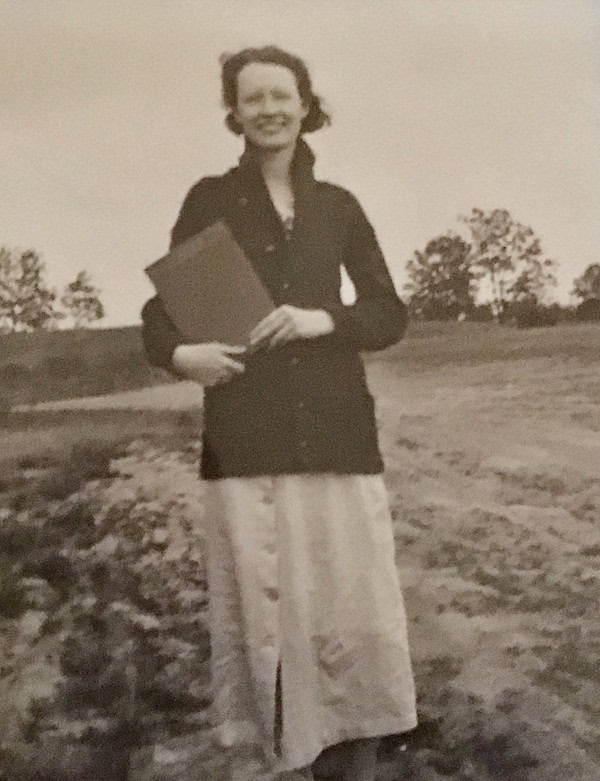During my early years of teaching, I offered a course in 19th-century American history. One semester, I decided to give a lecture on Margaret Fuller; her career illustrated several themes and connections I planned to highlight for the antebellum period.
Born in 1810 in Massachusetts, Fuller lived an eventful life. She underwent rigorous training in the classics under the stern tutelage of her father. She became part of the Transcendentalist movement—even editing its magazine, The Dial—but also veered away from the men in her circle to pursue a serious interest in women’s rights. The “Conversations” she hosted for women in Boston ranged across topics from Greek mythology to “The Trinity of Beautiful, Good, & True,” showcasing her erudition and commitment to women’s intellectual growth. In 1845, Fuller published a lengthy essay, “Woman in the Nineteenth Century,” arguing for women’s full equality in formal education and society generally. She became a journalist, and her interests expanded to issues relating to the abolition of slavery, the deplorable state of US prisons, and the injustice suffered by Indigenous peoples. Eventually she traveled to Italy, where she covered the 1848 revolutions, part of the larger European movement on behalf of liberal republicanism. There she met and (apparently) married the Marchese Giovanni Angelo Ossoli. Together, they had a son they named Angelo.
I was drawn to Fuller because she went through several distinct stages of growing intellectual and political awareness. In dramatic fashion, she defied the popular stereotype propagated by many prominent men of the time—that women were born with a certain character and then remained their childlike selves for the rest of their lives. Fuller embraced opportunities to debate, question, and travel.
I prepared for this lecture by doing more than necessary, immersing myself in Fuller’s writings and reading a full-length biography. I discovered that as she learned more about the wider world, her style of writing changed too, from stilted and self-conscious to fluid and confident. It is not difficult to understand why, as a young teacher, I was drawn to Fuller. But I could not have anticipated that my lecture about her would leave me shaken and distressed.
In 1850, Fuller, Ossoli, and baby Angelo were on their way back to the United States when their ship capsized not far from Fire Island, New York, and all three drowned. She was 40 years old. How might her friends have reacted to Ossoli and their relationship? What directions might her life have taken once she returned to Massachusetts? We will never know.
I could not have anticipated that my lecture would leave me shaken and distressed.
As I recounted the precise details surrounding the end of Fuller’s life, I found myself overwhelmed with emotion, with grief at the loss of life and her great promise. I stopped speaking for a minute, struggling to compose myself. But the longer I tried to calm down, the more distraught I became. I began to weep openly, quietly. My students were stunned, obviously embarrassed for me. They buried their heads in their notebooks and stole sideway glances at one another, hoping this ordeal that was engulfing us all would soon end. When I ended the class, several minutes early, they fled the room. I was mortified.
I began our next class by acknowledging that they must have found it unusual to see a teacher show such depths of emotion while lecturing. I asked them to talk about their own reactions. A few of them wanted to know more about Fuller in order to understand why I felt so strongly about her life story.
Since that distressing lecture, I have made a point to try—mightily, I might add—to keep my emotions in check while in the classroom. Although my distress was an honest expression of my feelings at the time, I fear they proved a distraction to my students. Seeing someone in front of you so upset implies a need to comfort them; I wanted my students to better understand our topic, not tell me that things were going to be okay.
Anyone who studies history or presents historical content to an audience contends with ideas, events, and images from the past that deeply disturb us, whether guiding visitors through an exhibit on the Holocaust; giving a webinar presentation on Pol Pot’s murderous regime in Cambodia; leading a group of tourists through Thomas Jefferson’s plantation, Monticello; or recounting the untimely death of an inspirational historical figure. Yet perhaps it is a personal connection with just one of our subjects—such as mine with Fuller—that brings out the depths of emotion.
The challenge of managing our emotions has assumed special urgency and proved particularly difficult while living through a pandemic and facing a mounting daily death toll. The multiple crises of the last year have upended our lives—as workers, scholars, and family members—and left emotions raw, close to the surface and ready to spill out at the least provocation.
Part of the historian’s enterprise is empathy—developing a full understanding of why people acted or thought as they did.
As historians, we seek to understand our subjects within their full context rather than view them as cardboard figures, detached from the time and place in which they lived. In this sense, part of the historian’s enterprise is empathy—developing a full understanding of why people acted or thought as they did. (Empathy should be distinguished from sympathy, which implies pity or condescension.) Clearly, an empathetic response to our subjects can blend into an emotional response, one informed by our sense of justice and fairness. What emotions are acceptable in the classroom? Humor, anger, indignation, grief?
On the one hand, we are only human, and it is difficult if not impossible to leave strong feelings and principles at the door when we walk into a classroom or otherwise fulfill our duties as historians working to enlighten our constituencies. We are not robots, and our presentations are not rote recitations of bloodless facts—separate from the great human drama that is history and separate from us, as people with particular points of view.
At the same time, our purposes are to inform, teach, and facilitate critical thinking about the past. We might hope that our students become swept up in the material we are dealing with—that they develop an emotional investment in the study of history—but do we really need to lead by example in a way that detracts from our intellectual efforts? When a lecture becomes a form of advocacy for a point of view, or when the material provokes in the speaker a strong response that seems to overshadow the material itself and begs our listeners to react the same way we do, we may have gone too far.
I am still uncertain about that lecture on Margaret Fuller. Didn’t the facts speak for themselves? Did I need to embellish those facts with my own tears, no matter how honest and spontaneous? Couldn’t I have risen to the occasion and delivered the lecture in a way that did not upset my students? There were other paths I might have taken: perhaps a quiet statement like “How tragic that she died this way and so soon” would have sufficed. However, my strong feelings took me by surprise; I’m not certain I could have checked them under those circumstances. As a young teacher, just starting out, I found myself with a deep emotional investment in Fuller and her all-too-brief life.
It’s good that we care about history, and that we feel strongly about the stories we tell students, tourists, museum-goers, and podcast listeners. How and where we draw the line—managing to get through difficult material without making our emotional reaction to it the day’s takeaway from the learning experience—remains a work-in-progress.
This work is licensed under a Creative Commons Attribution-NonCommercial-NoDerivatives 4.0 International License. Attribution must provide author name, article title, Perspectives on History, date of publication, and a link to this page. This license applies only to the article, not to text or images used here by permission.



